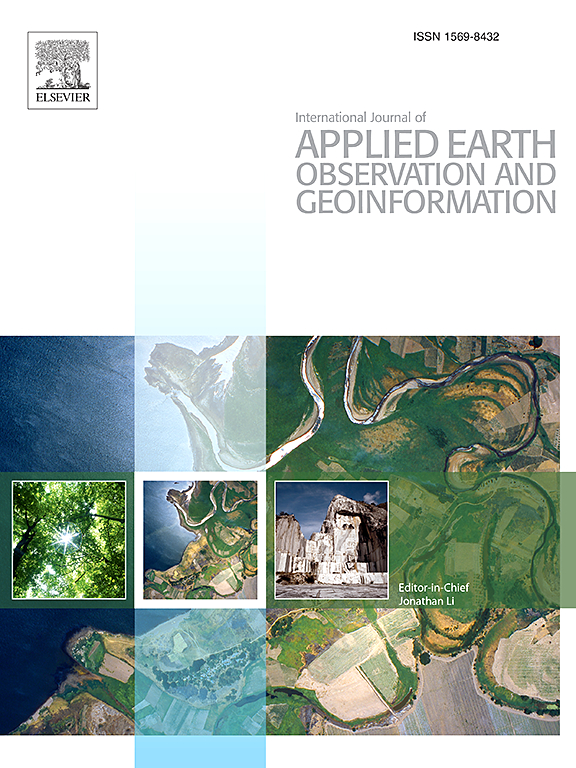SSMM: Semi-supervised manifold method with spatial-spectral self-training and regularized metric constraints for hyperspectral image dimensionality reduction
IF 7.6
Q1 REMOTE SENSING
International journal of applied earth observation and geoinformation : ITC journal
Pub Date : 2025-02-01
DOI:10.1016/j.jag.2025.104373
引用次数: 0
Abstract
Manifold learning is an important technique for dimensionality reduction in hyperspectral images. It maps data from high dimensions to low dimensions to eliminate redundant information. However, the existing manifold learning methods cannot effectively solve the problem of lacking label information and ignore the negative impact of dimensionality reduction on sample division. To address these, we propose a semi-supervised manifold method with spatial-spectral self-training and regularized metric constraints (SSMM) for hyperspectral image dimensionality reduction. The spatial-spectral self-training module is proposed, which learns pseudo-labels by jointly training the spatial and spectral information. This module first locates the spatial neighbors of the labeledit can adapt to different data distributions and feature samples and then sets an adaptive threshold based on the spectral features of labeled samples to filter spatial neighbors, so as to obtain the spatial-spectral neighbors as pseudo-labeled samples. In addition, to divide the sample categories while dimensionality reduction, low-dimensional manifold embedding is constructed and the metric constraint is imposed on the manifolds. Specifically, the Gaussian kernel function based on Mahalanobis distance is used to map the data into a more discriminative low-dimensional manifold embedding. At the same time, the regularized distance metric constraint is imposed on the manifold, so that samples of the same class are clustered and different classes are mutually exclusive. SSMM conducts various forms of experiments on the Houston 2013, Indian Pines, and Washington DC datasets. In the dimensionality reduction experiments, the overall accuracy of SSMM in any dimension is higher than that of other algorithms. In the classification experiments, the KAPPA coefficient of SSMM on the three data sets is improved by 1.41%, 0.61%, and 0.27% respectively. The feature extraction experiments show superior clustering performance. These experimental results demonstrate that SSMM not only effectively solves the problem of insufficient label information, but also significantly improves the classification accuracy of hyperspectral images after dimensionality reduction, which is superior to the existing manifold learning methods.
求助全文
约1分钟内获得全文
求助全文
来源期刊

International journal of applied earth observation and geoinformation : ITC journal
Global and Planetary Change, Management, Monitoring, Policy and Law, Earth-Surface Processes, Computers in Earth Sciences
CiteScore
12.00
自引率
0.00%
发文量
0
审稿时长
77 days
期刊介绍:
The International Journal of Applied Earth Observation and Geoinformation publishes original papers that utilize earth observation data for natural resource and environmental inventory and management. These data primarily originate from remote sensing platforms, including satellites and aircraft, supplemented by surface and subsurface measurements. Addressing natural resources such as forests, agricultural land, soils, and water, as well as environmental concerns like biodiversity, land degradation, and hazards, the journal explores conceptual and data-driven approaches. It covers geoinformation themes like capturing, databasing, visualization, interpretation, data quality, and spatial uncertainty.
 求助内容:
求助内容: 应助结果提醒方式:
应助结果提醒方式:


